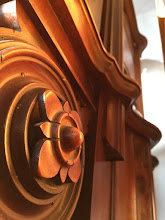- Sphagnum Peat Moss: good for absorbing and retaining moisture, also slightly acidic (which most veggies like);
- Perlite: expanded volcanic rock, reduces compatibility, improves drainage and keeps soil mix light;
- Vermiculite: mica, expanded by heat, absorbs moisture, provides air spaces, contains nutrients potassium and magnesium;
- Zeolite: aids water retention, holds and releases nutrients, contains calcium, magnesium, sulphur, iron, and other minor trace elements, "helps split roots to create heavier healthy fine roots", and helps balance pH.
I paraphrased this from the bag, I don't actually know this from memory or what exactly it all means. I can definitely see a theme of "lite" ness, so perhaps a "heavy" soil is not so good for getting plants started.




4 comments:
Thanks. I am not sure what our commercial potting soil has in it but will have a look now. We have had good luck with black topsoil we dug from out in a grass field, with a little sand in it. Tanya is ever the optimist and keeps buying commercial stuff to start plants. It works good for her houseplants (she buys specific mixes for eg violets) but not for seedlings.
We started a compost pile. Can you believe it?
Are you using a compost container or just the pile style? If container, what type?
Very interesting blog with great ideas and information.and everybody like this..
regardless of the effectiveness or not of the LED lights to grow our indoor plants, one area I am particular about is on the issue of its being environmental friendly.
LED grow lights: Have you tried growing plants with LED? My understanding is that LED uses less electricity and does not contain mercury. However, I'm not sure what other components it may contain that may or may not be harmful when landfilled. Would be a good item for me to research and learn more about.
Post a Comment